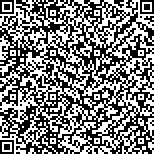| 摘要: |
| [目的]研究第二次土地利用现状调查以来山东省生态用地变化特点及驱动因素,评价各类驱动因素对生态用地的影响程度,为科学编制区域空间规划,保护和合理利用生态用地提供参考。[方法]文章构建了全省生态用地转移矩阵,归纳了影响生态因素变化的主要驱动因素,提出了驱动力指数计算方法,定量分析和比对了各驱动因素对生态用地的影响。[结果]2009—2017年生态用地共计转出2048万hm2,占生态用地总面积的472%; 转入316万hm2,占生态用地总面积的072%。8年来全省生态用地净减少1732万hm2,占2009年生态用地总面积的400%。生态用地的流向以耕地最多,向城镇村及工矿用地流出次之,向设施农用地的流出也有较大面积。[结论](1)在影响生态用地变化的六大驱动因素中,耕地开发和城镇村工矿占用的驱动力指数最高,非耕农业占用对生态用地的变化有一定影响。(2)六大因素中城镇村工矿占用对当地生态环境的破坏力最强。 |
| 关键词: 生态用地转移矩阵驱动因素驱动力指数山东省 |
| DOI: |
| 分类号:F30124 |
| 基金项目:山东省生态用地利用与保护研究 |
|
| ECOLOGICAL LAND USE CHANGE AND EVALUATION OF DRIVING FACTORS IN SHANDONG PROVINCE |
|
An Guoqiang1,2,Qin Xiaomin2,3, Xu Xiaoxiao2,3, Chen Longfei2,3,Xu Wenjie4,Xu Yuetong1※
|
|
1.College of Geography and Environment, Shandong Normal University, Jinan 250358, Shandong, China; 2. Shandong Land Surveying and Planning Institute, Jinan 250014, Shandong, China; 3.Shandong Basis of Key Laboratory of Land Use of Ministry of Natural Resources, Jinan 250014,Shandong, China; 4. Shandong Urban and Planning Design Institute, Jinan 250013, Shandong,China
|
| Abstract: |
| This paper studies the characteristics and driving factors of ecological land use change in Shandong province since the second survey on land use status, which can provide reference for scientific spatial planning and protection and reasonable utilization of ecological land. Ecological land transfer matrix was constructed, and the main driving factors affecting the changes of ecological land were summarized, proposed a driving force index calculation method, then quantitatively analyzed and compared the impact of each driving factor on ecological land. Results showed that in the period of 2009-2017, the total area of ecological land was transferred out for 204 800 hm2, accounting for 4.72% of the total area of ecological land; and transferred in for 31 600 hm2, accounting for 0.72% of the total area of ecological land. In the past 8 years, total ecological land use decreased by 173 200 hectares, accounting for 4.00% of the total area of ecological land in 2009. The most outflow area of ecological land was mainly to cultivated land, followed by the outflow area to urban villages, industrial and mining land, and the outflow to facility agricultural land. The conclusions are concluded as follows. Firstly, among the six driving factors affecting the change of ecological land use, the driving force indexes of cultivated land development and occupation of urban villages and mines are the highest, and the occupation of non cultivated agriculture has certain influence on the change of ecological land. Secondly, the six major factors of urban and rural industrial and mining occupations have the strongest destructive power to the local ecological environment. |
| Key words: ecological land transfer matrix driving factors index of driving factors Shandong province |

